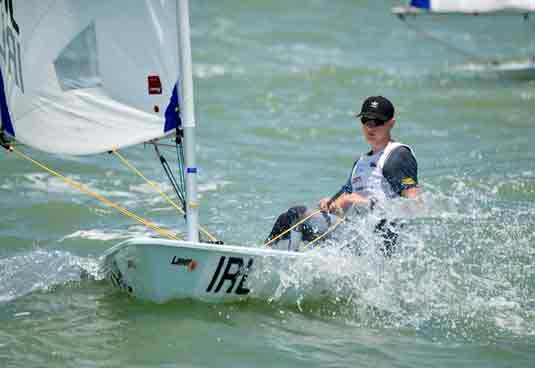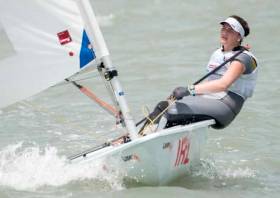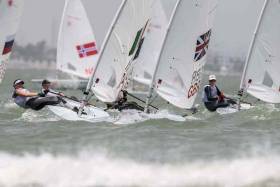Displaying items by tag: Nell Staunton
Staunton Leading Irish At Laser Radial Youth Worlds In Kiel
#Laser - A 12-strong team is representing Ireland at the Laser Radial Youth Worlds in Kiel, Germany which kicked off over the weekend.
Best of the bunch thus far is Nell Staunton of the National Yacht Club, fresh off her eight-place finish in last month’s Youth Sailing Worlds in the US, who stands in 18th place in the girl’s division on 23 points after two races.
Clare Gorman, also of the NYC and the only other Irish girl in Kiel, is in 67th after a black flag in her first race.
Leading the Irish contingent in the boys’ division is Hugo Kennedy (Royal St George), who holds 32nd place on the leaderboard on 22 points after two races.
Geoff Power (Waterford Harbour; 47th) and Tom Higgins (RStGYC; 49th) are the closest Irish boys, with Toby Hudson-Fowler (RStGYC) in 81st despite an impressive eight-point score in his second race; Dan McGaughey (Donaghadee SC) 132nd; Peter Fagan (Skerries SC) 138th; Henry Higgins (RStGYC) 148th; Jack Fahy (Lough Derg YC) 178th and Paddy Cunnane (Dingle SC) trailing at 207th with a disqualification in his first race.
Those struggling down the table have four more qualifiers to go before the big fleet races later this week.
Nell Staunton's consistent performance in the Laser Radial at the Youth Sailing Worlds was rewarded at the weekend with an eighth place overall in Texas, USA.
The Corpus Chisti result marks Ireland's highest finish in the girls' discipline, a top class result for the National Yacht Club single-hander.
 Jack Fahy
Jack Fahy
Ireland's Radial Jack Fahy finishes in 20th in the boys fleet.
As Afloat.ie reported previously, The Dublin schoolgirl had a week of solid performances counting all her results to date in the top 13. 46 competed in her class.
A fourth scored by National Yacht Club's Nell Staunton in race eight moves the Dubliner up to eighth overall in the Laser Radial Girls class of the 2018 Youth Sailing World Championships at Corpus Christi Yacht Club in Texas with a single race left to sail today.
The Dublin school girl had another solid performance yesterday with her best result of the week, counting all her results to date in the top 13. 46 are competing in the girls class.
"The Dublin school girl had another solid performance yesterday"
Six classes have been clinched with a race to spare in this year's championships.
In the boys Laser Radial class, Jack Fahy of Lough Derg and the Royal St. George Yacht Club is 20th from 58.
The fourth day of the 48th Youth Sailing World Championships saw six class winners crowned gold medalists.
The Youth Worlds has become the pinnacle sailing event for teenagers aged 16-18. Past gold medalists have gone on to very successful careers in the upper echelons of the sport.
Whether American Geronimo Nores (Boys’ RS:X), Islay Watson of Great Britain (Girls’ RS:X), Argentinians Teresa Romairone and Dante Cittadini (Nacra 15), Josh Armit of New Zealand (Laser Radial Boys’), Charlotte Rose of the U.S.A. (Laser Radial Girls’) and Joseph Hermus and Walter Henry (USA) (Boys’ 420) follow in those footsteps remains to be seen.
Tonight they’re revelling in the fact that they’ve won a gold medal at a world championships with one race to spare.
Friday is the final day of competition in Corpus Christi where the remaining podium positions will be decided. Racing starts at 12:00 local time with one race scheduled per fleet. -- Sean McNeill


























































